When hiking with kids, a carrier is an absolute must-have. If you are new to hiking with kids, you may have asked yourself which child carrier is best for hiking. I personally use both a soft structured carrier and a framed carrier when hiking with my kids and I’m going to share which one I prefer for different situations as well as the pros and cons to both carriers.
*Some of the links shared in this post may be affiliate links meaning I make a small commission off of your purchase (with no extra cost to you). This allows me to continue to create free content for my readers. Thank you for your continued support!
Soft Structured Kid Carrier
A soft carrier is the most versatile of the carriers. You can of course use it hiking, but you can also wear it around the house, traveling, or walks around the neighborhood. Depending on which soft carrier you get, it can be used from when your baby is a newborn up until toddlerhood. You’re also able to wear your baby on your back or your chest depending on which you prefer. My personal favorite soft structured carrier is the Ergobaby Omni Breeze. They have also created an All Weather Cover that helps keep baby warm in the colder months.
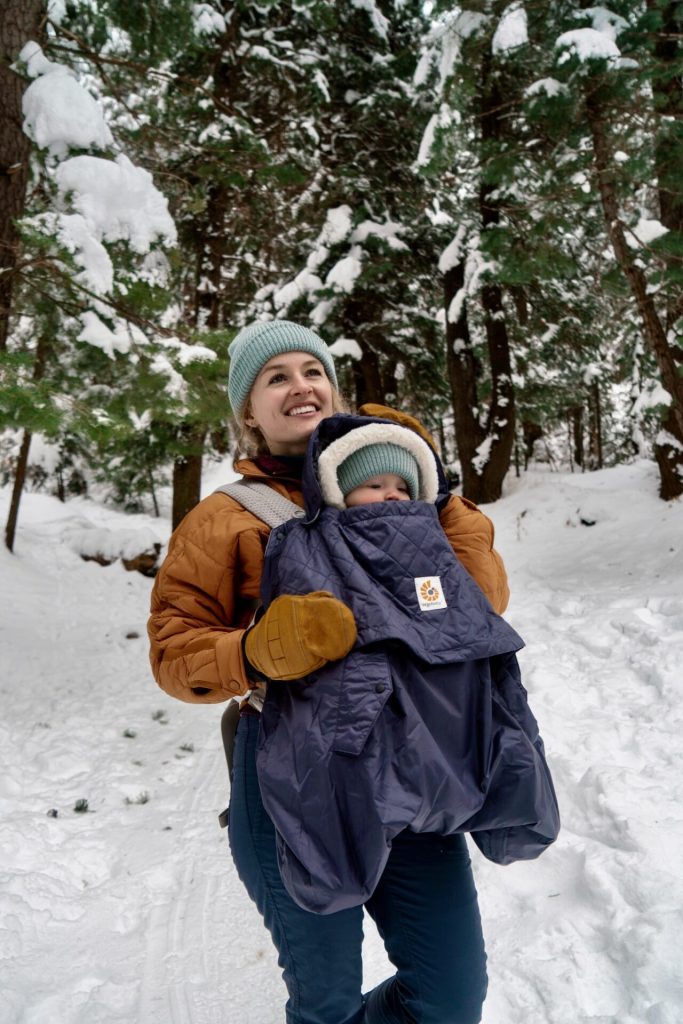

Pros
- Lightweight
- Small and compact
- Can carry baby on the front—Able to replace binky, feed them, and check their temperature
- Works for small babies that don’t have total control of their head
- Comes with a shade cover and optional weather cover
Cons
- Weight is distributed a lot on shoulders
- Not as great viewpoint for baby when worn on back
- Not much storage
- No weather protection built in
Framed Child Carrier
Framed carriers are very popular on the trail because they are designed with hiking in mind. You need to wait until you baby has complete control of their head before they are able to ride in it (usually around 6 months old). Once they’re old enough, they will love the higher vantage point and everything they can see. Your back will also thank you because, when fitted properly, it puts most of the weight on your hips and legs which makes for a much more comfortable carry.
I use the Osprey Poco Plus and love it. It has lots of storage, the sun shade is attached, and a great suspension system that makes it comfortable for me to carry all day long. It also has the option of putting a rain cover on which I love. Not only do I use it when it’s raining or snowing, but also if it’s extremely cold or windy. It helps keep my baby a little warmer.
Some other framed carrier options are the Dueter Kid Comfort and the Kelty Journey PerfectFIT Carrier. Both carrier that my friends use and love.
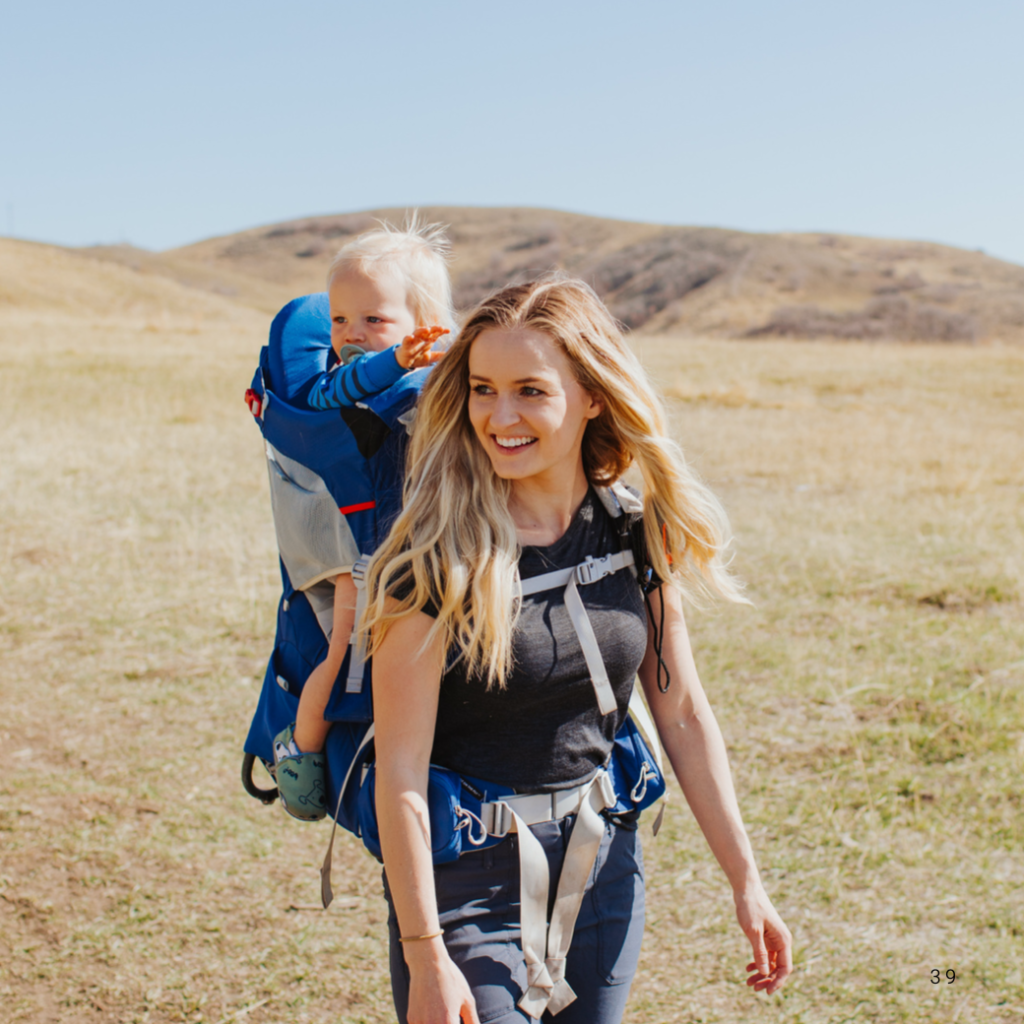
Pros:
- Weight is distributed more comfortably so you can carry your baby longer
- Lots of storage space
- Baby sits up higher for a better view
- Comes with a sun shade and optional rain protection
Cons:
- Heavier than other types of carriers
- Not as compact
- Baby has to have complete control of head to be able to ride
So, Which Child Carrier is Best for Hiking with Kids?
I love and use both types of these carriers depending on the situation.
Times I use my Soft Structured Child Carrier:
- If my baby is 6 months or younger
- When I am hiking with my husband or someone else who is carrying gear I often times opt for my soft carrier because I don’t have as much to carrier and it’s lighter weight
- If I am traveling somewhere to hike. If we are driving to Las Vegas and we don’t have a lot of room in the car, I will just bring my soft carrier and use that on our hikes.
- When I am likely to carry my toddler, I prefer the soft structured carrier because I am usually carrying him in shorter spurts and he’s getting a bit too heavy in the framed carrier.
- When I’m further along in my pregnancy and the framed carrier is becoming uncomfortable. (always check with your doctor before carrying your child on a hike while pregnant)
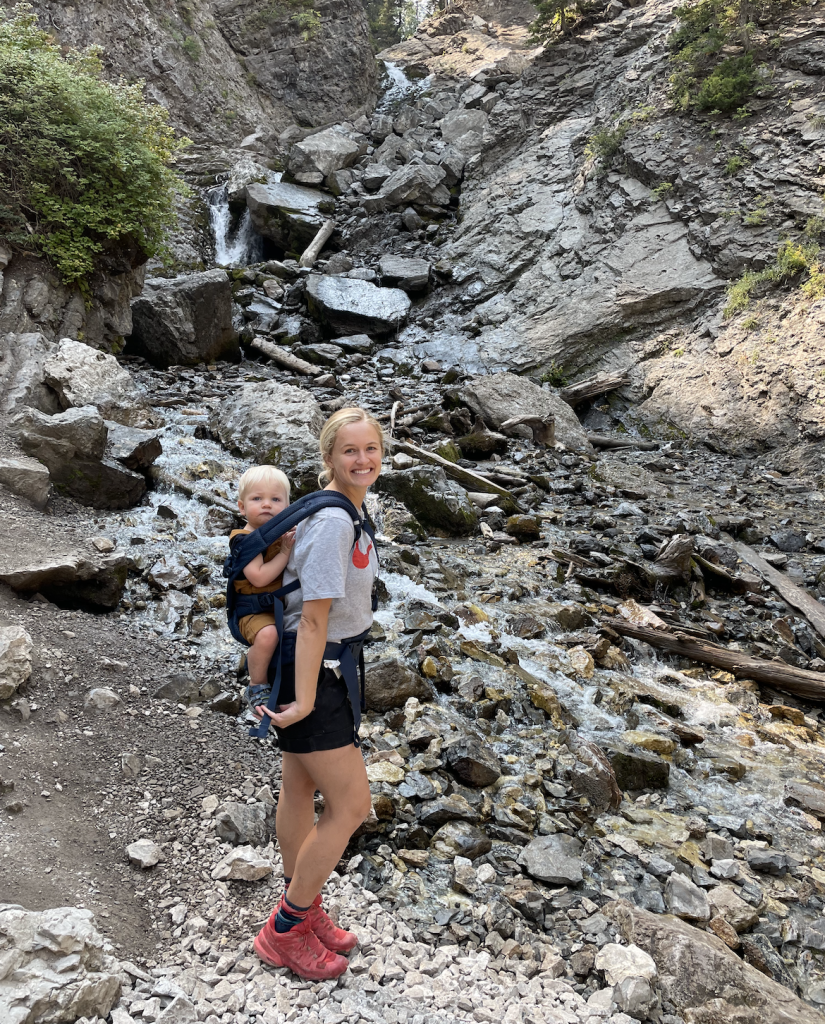
Times I Use My Framed Child Carrier:
- Hikes that I’m doing on my own with my kid(s). This way I can carry everything I need and don’t have to wear a heavy baby or toddler on my front and backpack on my back.
- Longer hikes. I do find that over a longer hike the framed carrier does a better job of distributing the weight onto my legs and not my shoulders and I’m not as sore after.
- When both my husband and I are carrying a kid, one of us will need to carry our baby in the framed carrier so we have space for our gear as well.
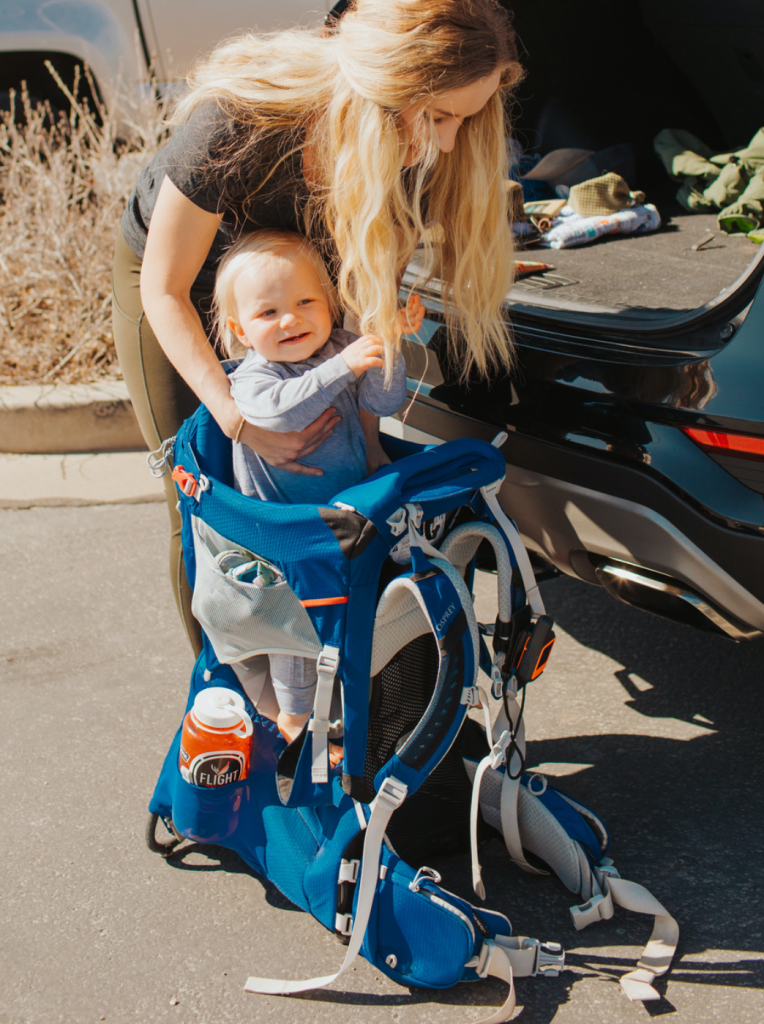
So depending on what you’re hiking, and how old your kid is, your decision on which child carrier is best for hiking is best for you and your family might vary. It never hurts to ask a friend to try their carrier out or go into the story to try one on if you are not sure of which one will best fit you.
If you want to read more about the types of carriers I use for hiking, click here.

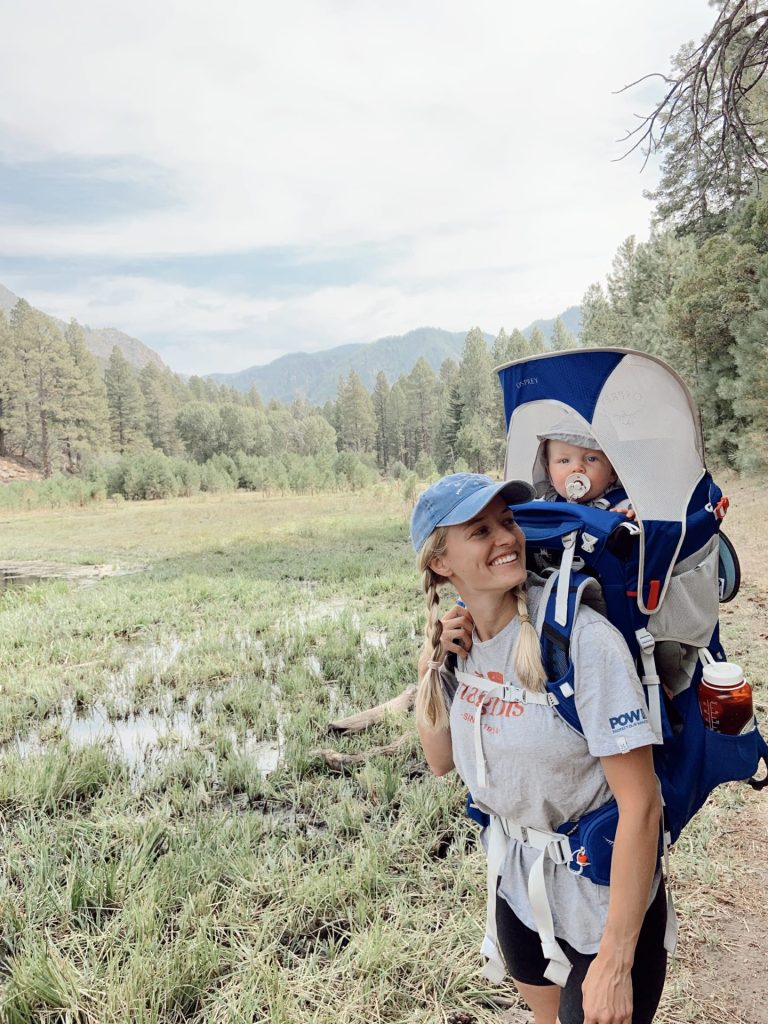
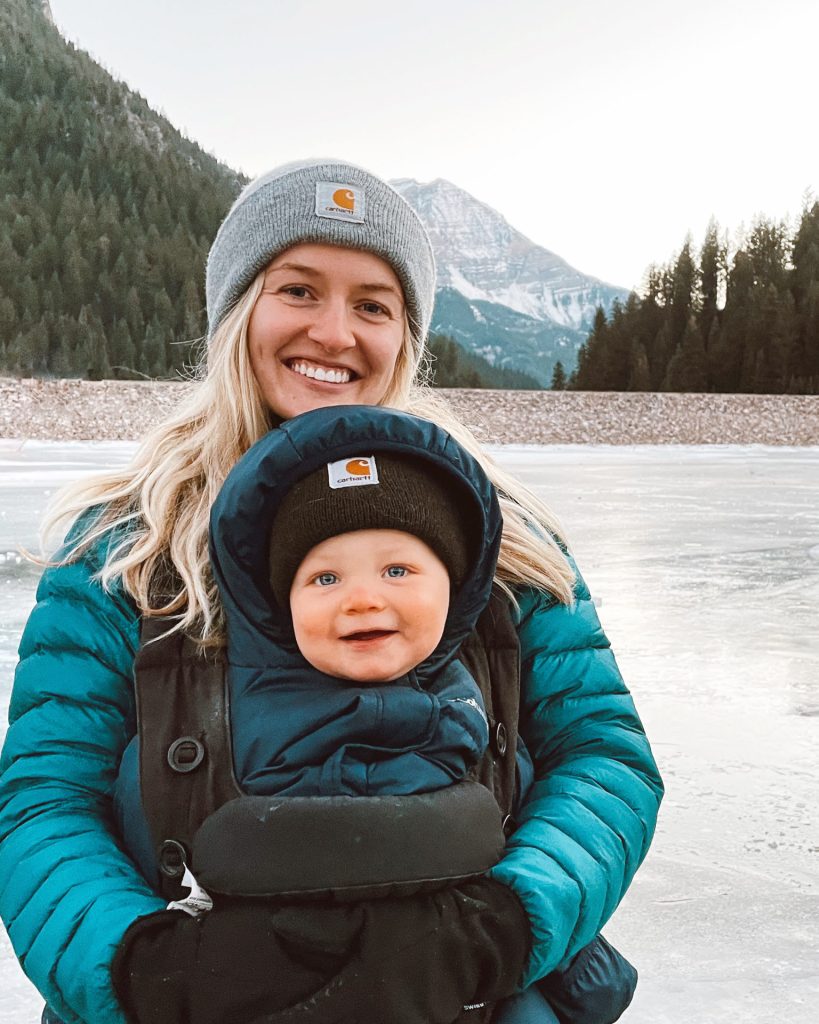
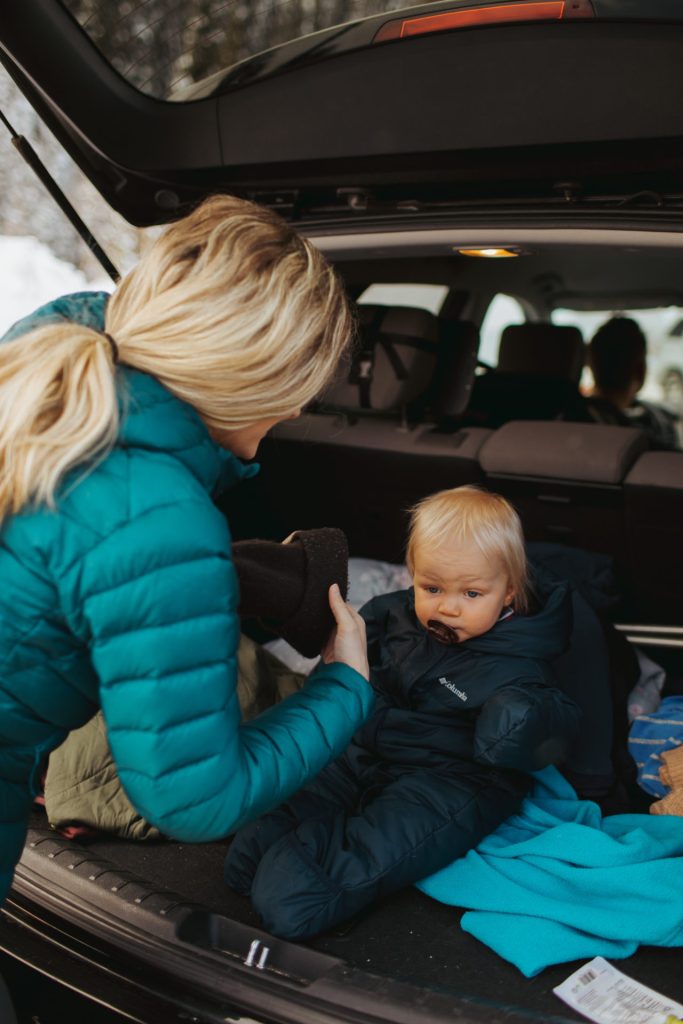


Pingback: What to Pack for Hiking with a Baby -
Pingback: Wildlife Safety on the Trails: General Guidelines - Hailey Outside
Pingback: Osprey Poco Plus Review | The Best Child Hiking Carrier - Hailey Outside